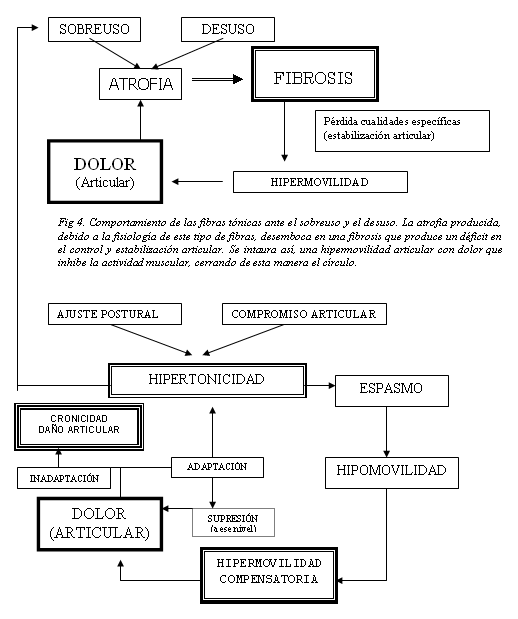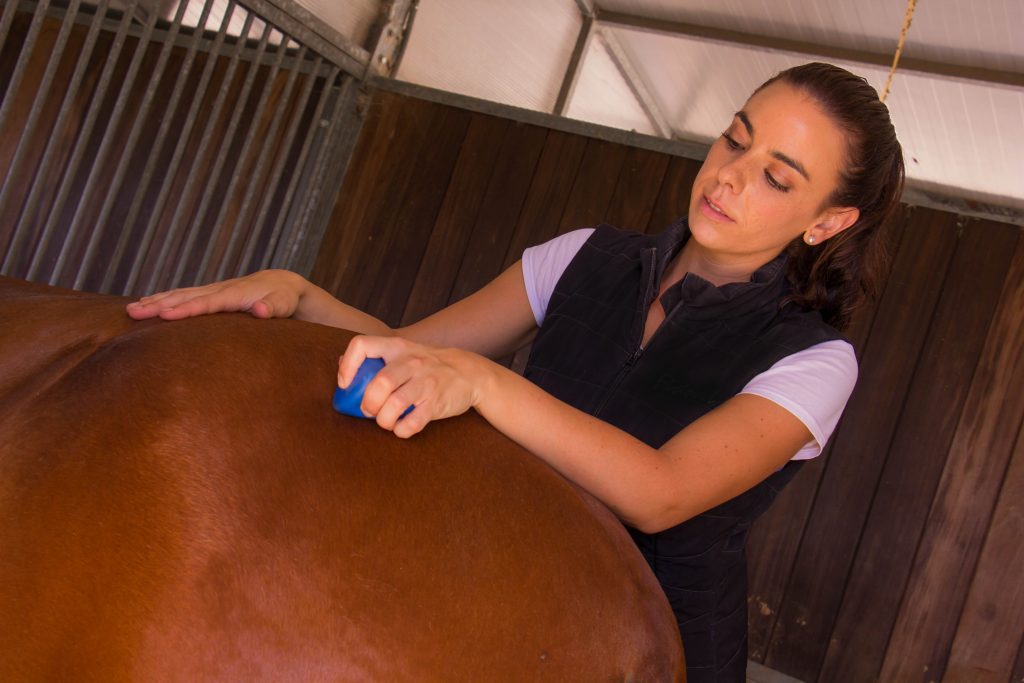Muscular anatomy has been described in the previous post, but it is important to consider the consequences of the alteration during muscle contraction. Specifically in this post we will focus on describing the pathology of the two types of stabilizing muscles according to the authors Comerford M.J, Mottram S.L (ii, xxvii).

Illustration 1: vicious circle scheme of injury, ischemia and pain.
Pathology of the local stabilizer muscles: The most common alteration in this case is a deficit of the motor control associated with a delayed recruitment of motor units; this means the motor units are activated out of time. This situation can lead into a looseness of proprioceptive control of the intra-articular neutral zone and therefore the alteration of the joint position; as a consequence joint offsets and pain can occur.
Horses with chronic pain can react with a muscle inhibition that over time triggers muscle atrophy changing the motor pattern of the horse’s gaits
It is important to remember that atrophies consist on a decreased number of sarcomeres (contractile part of the muscle) and an increasement in their length. This alteration can lead into muscular structure changes such as fat infiltrates, so if muscle motor control is not recovered, the alteration can become chronic.
Global stabilizer muscle pathology: Global stabilizer muscles are altered due to poor activation of tonic fibers in activities with low biomechanical loads. This happens because the muscles are elongated and totally inhibited during the concentric contraction, therefore muscles cannot be easily activated. To compensate, there is a recruitment of phasic fibers for activities with low biomechanical load, which leads to early muscle fatigue. This musculature reacts to its hyperactivity with pain and a muscle spasm that produces changes in the length of the muscle, obtaining a shortened but hyperactive muscle.
We can resume this post saying that any alteration in the stabilizing musculature will produce an alteration in the motor pattern of movement. Natural gaits of the horse will not have a free and correct articular path, and the beauty of the movements is limited by the insufficiency of the antagonistic muscles.
It would be a serious mistake to force the horse to perform the limited movements without previously reprogramming the altered muscle group through a correct process of recovery and muscle rebalancing.
ii Comerford MJ, Mottram SL. Functional stability re-training: principles and strategies for managing mechanical dysfunction. Man Ther. 2001 Feb;6(1):3-14
xxvii Comerford MJ, Mottram SL. Movement and stability dysfunction—contemporary developments. Man Ther. 2001 Feb;6(1):15-26


